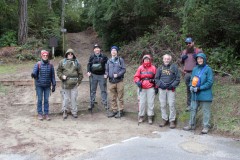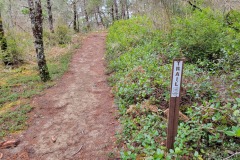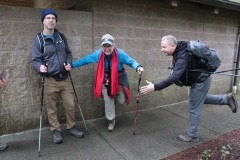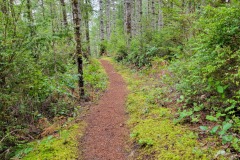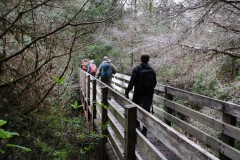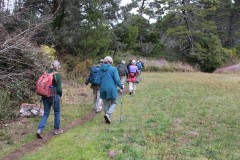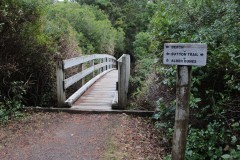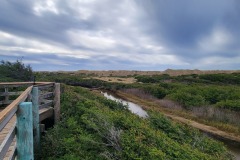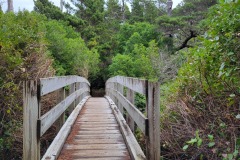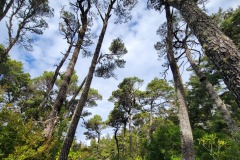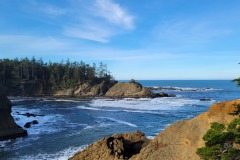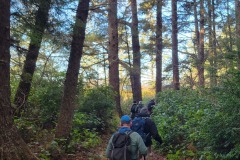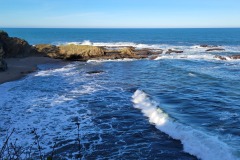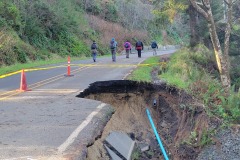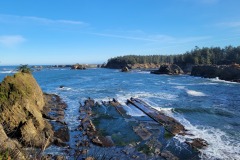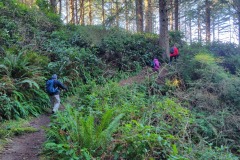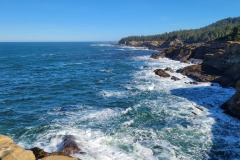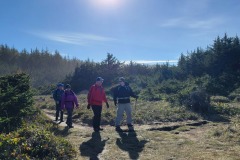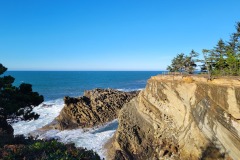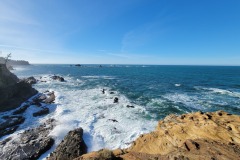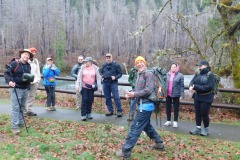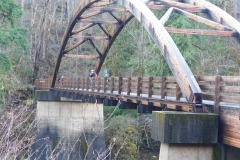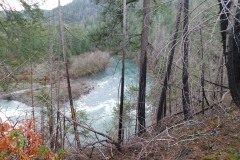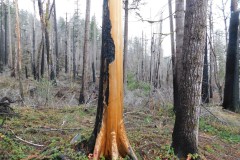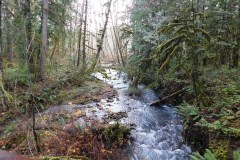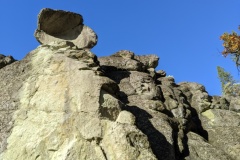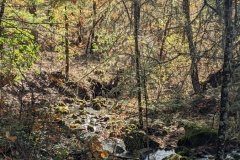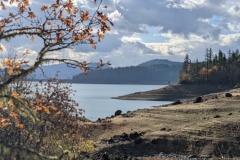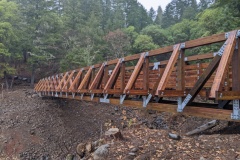Hike Coordinator: Terry Andreucci
Narration by Lane Harris
We had a pretty good turnout on this hike to North Bank, which was the backup plan to the canceled Rogue River trail hike. That hike would have to wait another day once they clear the landslide that occurred just a half mile in. So, to match the difficulty level of the Rogue River trail, Terry decided North Bank would fit the bill. Ya, we’re just kidding here. Whereas the Rogue River trail gently meanders along the river, North Bank dramatically climbs higher and higher as it tests even the iron legs of fit hikers. No, not an even trade, I have to say!
I can’t help but think the route that Terry chose this day was purposefully selected to lull us hikers into a sense of comfort and ease. From the west trailhead, we started out on a level path towards the Chasm Creek Trail. The first few miles were but a gentle stroll, as we made good time cutting through the morning fog. But the trail soon turned sadistic, as it began a short but steep ascent towards the middle ridge trail. This stretch of the trail, although just less than a mile, will make you consider taking up a different hobby. You know, like one that is much friendlier on the cardiac and respiratory system… Stamp and coin collecting sounds pretty good right now!
After catching our breath at the intersection of ‘punishment path’ and middle ridge, we discussed the options of either going further uphill to the boundary ridge trail or downhill to the picnic table. Easy choice here, folks. So down we went. Well, sorta. There was just one more small hill to climb from the saddle which we were at before it actually headed downhill for real. Which proves the old adage us hikers always recite when talking about North Bank, which is “Every trail at North Bank goes up”. It apparently holds true here even when you’re going downhill.
We had a well-deserved lunch break at the picnic table as we admired the views of the valley below. The rolling green hills were now gleaming in the sunlight, as the clouds began to give way to blue skies. Lofty views like this are the reason we sometimes endure torturous treks up steep trails. It may not be easy, but we feel the challenge is worth the payoff.
Knowing it was literally all downhill from here, we joyfully set off down the middle ridge trail, eventually connecting with the Blacktail Ridge trail and back to the parking lot. North Bank is one of those few places where, as you walk downhill, can still embrace the incredible scenery for miles. That is, unless you hike here on a real foggy day. Been there, done that. It’s not that incredible. Thankfully, today was not like that and we were able to enjoy all that North Bank had to offer.
Pictures below by Lane Harris
















